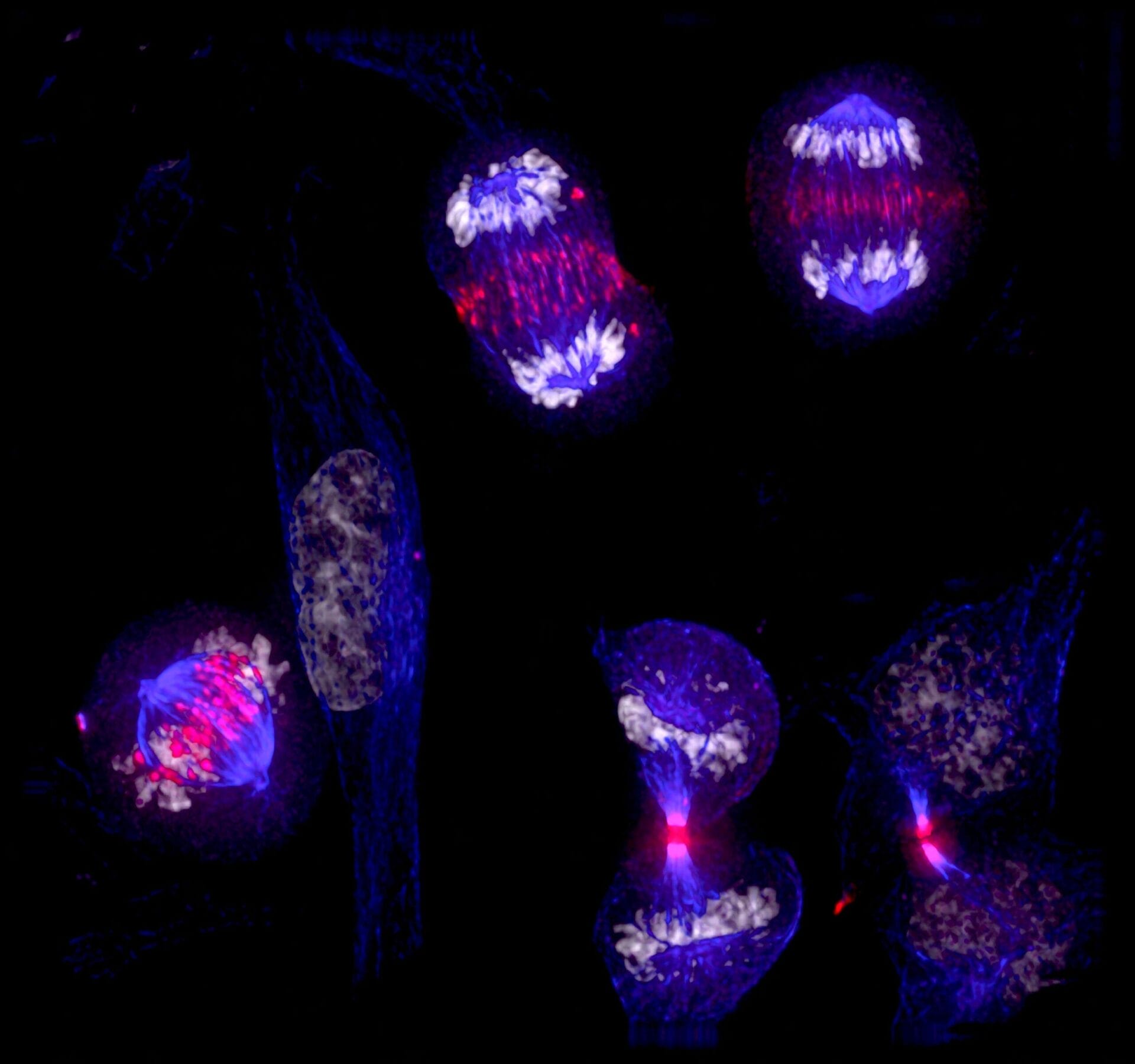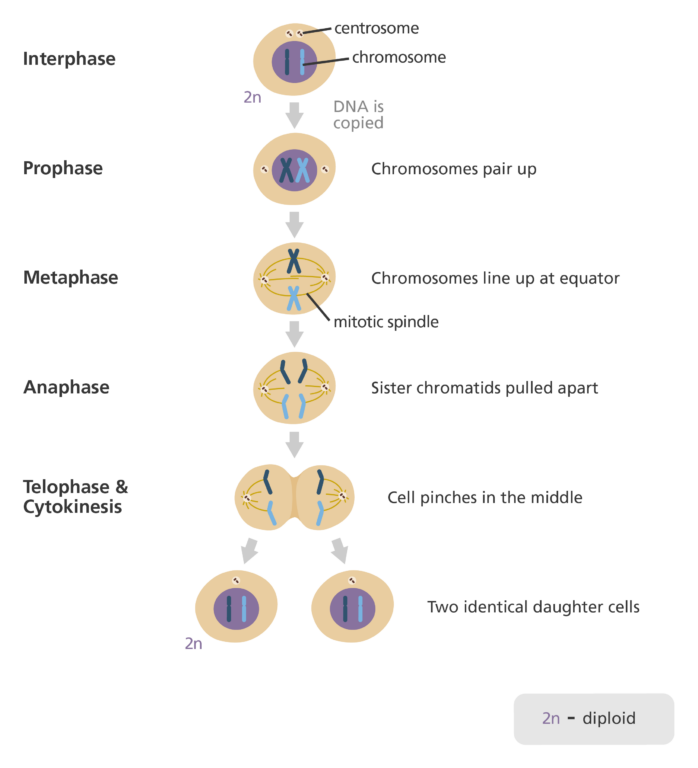What is mitosis?
Image credit: Paul Andrews/Univ. Dundee. Source: Wellcome Collection.

Mitosis is a process where a single cell divides into two identical daughter cells (cell division).
- During mitosis one cell divides once to form two identical cells.
- The major purpose of mitosis is for growth and to replace worn out cells.
- If not corrected in time, mistakes made during mitosis can result in changes in the DNA that can potentially lead to genetic conditions.
What happens in mitosis?
Mitosis is divided into five phases:
1.
Interphase:
- The DNA in the cell is copied in preparation for cell division, this results in two identical full sets of chromosomes.
- Outside of the nucleus are two centrosomes, each containing a pair of centrioles, these structures are critical for the process of cell division.
- During interphase, microtubules extend from these centrosomes.
2.
Prophase:
- The chromosomes condense into X-shaped structures that can be easily seen under a microscope.
- Each chromosome is composed of two sister chromatids, containing identical genetic information.
- The chromosomes pair up so that both copies of chromosome 1 are together, both copies of chromosome 2 are together, and so on.
- At the end of prophase the membrane around the nucleus in the cell dissolves away releasing the chromosomes.
- The mitotic spindle, consisting of the microtubules and other proteins, extends across the cell between the centrioles as they move to opposite poles of the cell.
3.
Metaphase:
- The chromosomes line up neatly end-to-end along the centre (equator) of the cell.
- The centrioles are now at opposite poles of the cell with the mitotic spindle fibres extending from them.
- The mitotic spindle fibres attach to each of the sister chromatids.
4.
Anaphase:
- The sister chromatids are then pulled apart by the mitotic spindle which pulls one chromatid to one pole and the other chromatid to the opposite pole.
5.
Telophase:
- At each pole of the cell a full set of chromosomes gather together.
- A membrane forms around each set of chromosomes to create two new nuclei.
- The single cell then pinches in the middle to form two separate daughter cells each containing a full set of chromosomes within a nucleus. This process is known as cytokinesis.
